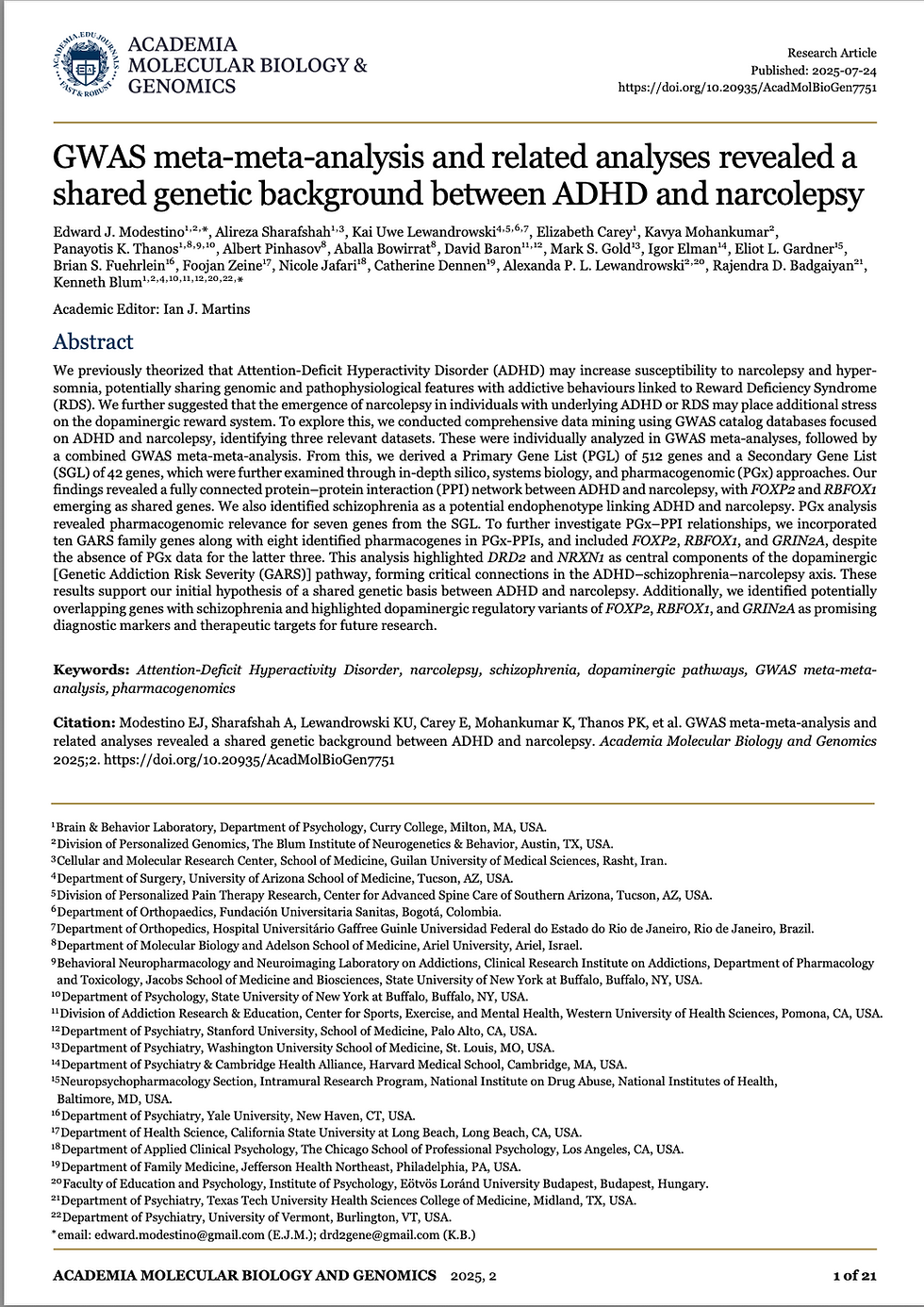Stimming: A Neurodivergent Behavior
- Edward Justin Modestino, Ph.D.

- May 28
- 3 min read

Self-stimulatory behavior (Stimming) refers to repetitive movements, sounds, or actions that individuals engage in to manage emotions, regulate sensory input, express excitement or handle stress. Stimming is most associated with autism spectrum disorder (ASD). However, it is also shown in individuals with other neurodivergent conditions such as attention-deficit/hyperactivity disorder (ADHD), anxiety disorders, and sensory processing disorder. Stimming is often confused with Stereotypic Movement Disorder (SMD), which is a Primary Motor Stereotypy (PMS). SMD usually occurs in children and is generally viewed as a movement disorder on its own. Stimming is a self-stimulatory behavior in which individuals seek sensory satisfaction, which would be classified as a Secondary Motor Stereotypy as it is part of another disorder, not SMD.
Stimming behaviors can vary and may include rocking, spinning, hand flapping, repeating phrases or sounds (echolalia), pacing, or even using fidget toys. These behaviors are self-soothing and generally automatic. These help people process overwhelming stimuli or help to maintain focus. As an example, a person with sensory issues might rock back and forth to quiet the impact of chaotic or loud environments. Someone else might may hum or repeat words to self-regulate during moments of anxiety.
From a historical perspective, stimming was viewed as a maladaptive or disruptive behavior that should be suppressed. However, this view has been increasingly challenged by modern neurodivergent individuals and mental health professionals who advocate for a more inclusive and compassionate understanding of neurodiversity.
Contemporary research emphasizes the regulatory function of stimming and highlights the harm caused by attempts to suppress these behaviors. Kapp et al. (2019) completed a study that explored the experiences of autistic adults and found that stimming often provided emotional relief and was critical for well-being. Several participants reported that being forced to mask or suppress their stimming led them to have increased emotional dysregulation, anxiety, and mental and physical burnout. These findings support the growing evidence that stimming should not be seen as problematic unless it causes harm to the person themselves or others.
Research into stimming also highlights the emotional and sensory regulation role that this behavior plays for individuals with ADHD. According to Bijlenga et al. (2017), people with ADHD often engage in repetitive behaviors to modulate attention and cope with emotional dysregulation. These behaviors can include fidgeting, tapping, and chewing. These assist with self-soothing and concentration. As with autism, these actions are not necessarily signs of dysfunction but rather strategies that help to navigate an overstimulating or demanding world.
It is important for clinicians, educators, and caregivers to understand that stimming can be a healthy and important behavior for neurodivergent people. Punishing these behaviors without understanding their main purpose could lead to feelings of decreased mental health and shame. Stimming is a natural and often beneficial behavior that serves multiple functions, like emotional processing, sensory regulation, and self-expression. As understanding neurodivergence continues to evolve, we should change our attitudes toward behaviors like stimming. Stimming is a valid coping mechanism and helpful to the needs of neurodivergent people who engage in it.
References
Bijlenga, D., Tjon-Ka-Jie, J. Y. M., Schuijers, F., & Kooij, J. J. S. (2017). Atypical sensory profiles as core features of adult ADHD, irrespective of autistic symptoms. European Psychiatry, 43, 51–57. https://doi.org/10.1016/j.eurpsy.2017.02.481
Ghosh, D., Rajan, P. V., & Erenberg, G. (2012). A comparative study of primary and Secondary Stereotypies. Journal of Child Neurology, 28(12), 1562–1568. https://doi.org/10.1177/0883073812464271
Kapp, S. K., Steward, R., Crane, L., Elliott, D., Elphick, C., Pellicano, E., & Russell, G. (2019). “People should be allowed to do what they like”: Autistic adults’ views and experiences of stimming. Autism, 23(7), 1782–1792. https://doi.org/10.1177/1362361319829628
Kress, V.E. and Paylo, M.J. (2019). Treating those with mental disorders: A comprehensive approach to case conceptualization and treatment. 2nd. edition. New York: Pearson



Comments